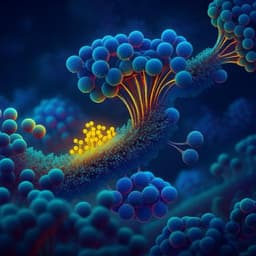
Engineering and Technology
On-demand light-driven release of droplets stabilized via a photoresponsive fluorosurfactant
G. Cheng, Q. Xiao, et al.
This groundbreaking research by Guangyao Cheng, Qinru Xiao, Chit Yau Kuan, and Yi-Ping Ho unveils a rapid method for selectively releasing water-in-oil droplets in microfluidic devices using a photoresponsive fluorosurfactant. With laser-triggered photothermal responses, this innovative approach offers potential for high-throughput screening applications.
Playback language: English
Related Publications
Explore these studies to deepen your understanding of the subject.







